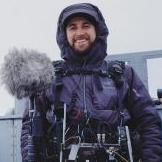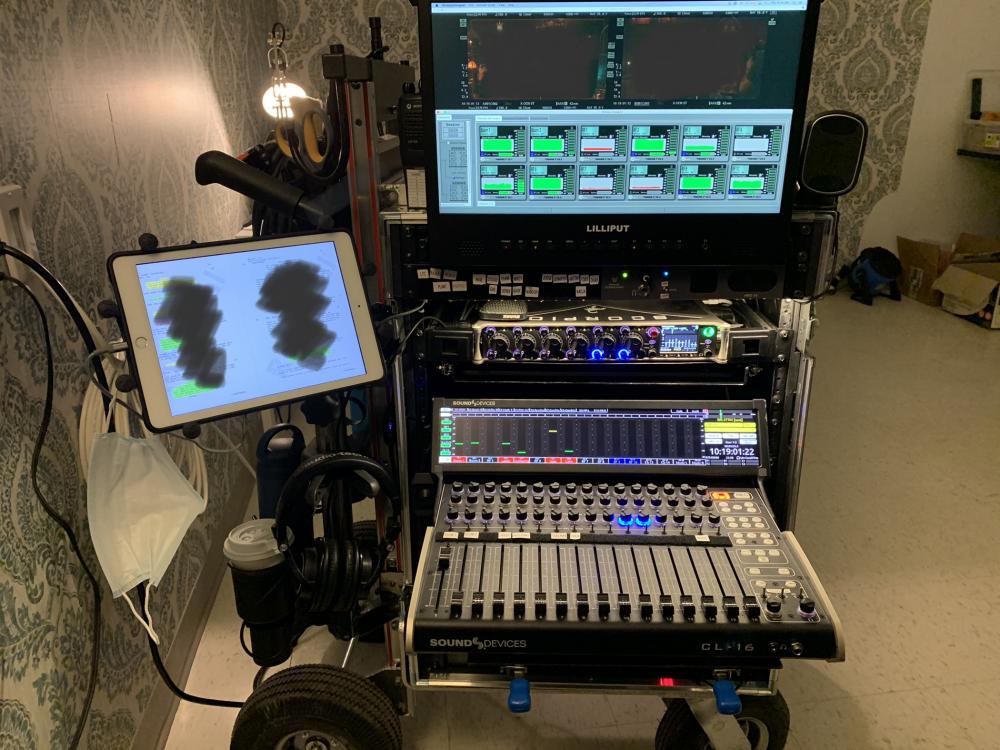-
Posts
86 -
Joined
-
Last visited
About Rob Beal
- Birthday 10/07/1979
Profile Information
-
Location
Toronto, Canada
-
About
Location sound mixer in Toronto, Canada.
-
Interested in Sound for Picture
Yes
Recent Profile Visitors
2,595 profile views
-
Thanks, sounds like it's worth exploring the VLAN issue when I'm between shows this year.
-
No, after doing a fair bit of research last summer (my knowledge of networking was essentially zero before this), I decided that my setup was small and simple enough that separate VLANs weren't required, as a robust switch like the Cisco SG3xx has enough bandwidth to handle it all without getting anywhere close to its limit. For the most part this has been true, as I've never had even a single hiccup in my Dante or NDI streams, but now that you've pointed out your experience, it makes me wonder if separate VLAN's may solve the issue I've been having where my Wireless Designer will occasionally disconnect or require a restart. Now I'll have to decide if it's worth mucking about with VLANs to try to solve a fairly minor issue. Did you find them easy to setup? I don't know how much networking knowledge you have, but setting up multiple VLANs was sort of the point where I started to scratch my head and felt like a fish out of water.
-
Yes I use a Kiloview E1 encoder for NDI.HX. If you want to try full bandwidth NDI you could try one of the Bird Dog units.
-
No need for multicast flows, the Dante signals in my setup are only going between the Scorpio and the Ferrofish. I use managed switches (Cisco SG350) but I did test it with unmanaged switches and it worked fine, so I keep those around as backup in case my Cisco switches ever go down. It's worth noting that I use an NDI.HX video encoder which compresses the stream down to 8-20Mbps so it doesn't add much strain to the network. A full uncompressed NDI stream would be around 125Mbps. If you only have one stream that should still be fine as long as you have a good quality Gigabit switch, but you'd have to do your own tests to confirm. I have my Scorpio set to be the clock master.
-
Yes you can disable EEE in the settings and that's one of the first things you should do.
-
Thanks, when designing it I was a bit hesitant to commit to splitting my cart into two pieces, as I worried it would be slow and clunky moving two carts around instead of one, but I actually don’t mind it, and it makes me much more flexible. I can easily move the Zuca cart close to set or into a tight spot and then find a more private and comfortable spot for myself, which I appreciate a lot during Covid times. When on location I often stay in the comfort of my van. On my current show I’m actually mixing from my own private office next to stage (whenever we’re in studio at least). I was worried I would feel too removed from set, but there are ways to get around that. The video coordinator now provides a “spy cam” video feed during setups and blockings, we keep a spare mic built on a flexi arm that we stick on set, my crew and I have our own private comms to stay in touch with each other, and I monitor channel 1 of the public walkie to keep tabs on everything else. The ability to stay safe and even take my mask off for the majority of the day is a huge win for me. I’m sure once the threat of Covid is firmly in the rear view mirror I’ll be itching to get back in the thick of the action, but for now I’m really loving the setup. One Ethernet cable is all that’s needed, you just need a switch to combine the signals. With such a simple network an unmanaged switch is probably fine (I tested it using one and didn’t encounter any issues), but to be safe I use a managed Cisco SG350 switch to make sure everything is rock solid and can handle the bandwidth. There are guides online to walk you through the optimal settings.
-
The patchbay on the remote cart has both inputs and outputs, so I can use it however I need to. If I'm doing playback myself, my Mac Mini on my main cart feeds into my Scorpio via USB and I can send the outputs to the remote cart Ferrofish via Dante to feed speakers/earwigs on set. If I'm working with a separate playback/ProTools operator with their own cart, then they just feed the music and LTC tracks into my remote cart's inputs and it comes back to me via Dante. I keep my VOG separate from my cart, it is a standalone system. And yes the patchbay has BNC inputs for all my antennas (on a separate patchbay on the back), and an SDI video input that gets encoded to NDI. The remote cart is powered by a Remote Audio LiFeBox that feeds a modified Hotstrip so it can switch seamlessly from AC power to DC and stay charged up. It can run for a full day on DC if needed. My main cart is powered by its own Meon.
-
Sure, here is the remote cart on set, and the “mothership” back in my sound office, connected by Dante.
-
You don't need to do anything to convert the X outputs to Dante, you simply assign them in the Dante Output Routing page of the Scorpio menu. The Scorpio can output 32 Dante channels. And yes I'm using a Silex DS-501 to convert USB to IP for Wireless Designer, but I find it a bit buggy on Mac OS Catalina, so I'm looking for another solution (or I may just roll my Mac Mini back to Mojave in the meantime, which is the last officially supported OS according to the Silex website).
-
Yes my wireless all lives in a remote "mini-cart" that I put on set (Lectrosonics Venues, Sennheiser G4 IEM, Comtek, and NDI video encoder), and cable back to my main cart via Dante. I use Wireless Designer on my cart to view the wireless information and control the Lectro receivers.
-
I am, it gives me all the inputs and outputs I need and is rock solid. I use it with my SD Scorpio.
-
Thanks Larry, and good idea re: the ALP-500, as I still have a couple of those kicking around in storage. I guess I'll stick with my SNA600 for now, and the next time my boom op encounters range issues I'll try switching to the ALP500 and see if it improves the issue.
-
I recently moved the IFB feed for my crew down to the 470MHz range (using a Sennheiser SR300 transmitter in the A1 block) in order to keep the frequency a bit further from the rest of my wireless. I've always used a Lectro SNA600 dipole as my transmitting antenna, but technically the center frequency of that antenna is only tuneable down to 550MHz. I know that's probably "close enough" to effectively be fine, but I'm curious if there would be a better antenna for a 470MHz signal. Directional might be nice too, so I can point it at set and give my boom op a bit more range that way too. What are other people using? Rob
-
This looks interesting, you could keep one on your sound cart feeding into your mixer for private comms, and when you need to walk away from your cart you could just take this with you and maintain communication with your crew.... something I've been thinking about implementing for a while but hadn't seen an elegant solution for yet. I think I'll back this project and give it a try. And if we don't end up using it on set, at least I can bring it on ski trips!










